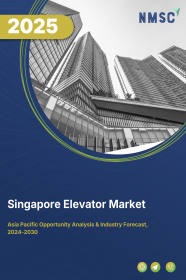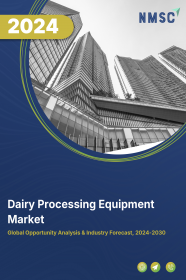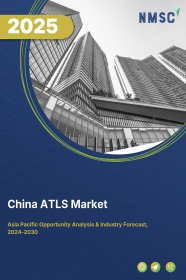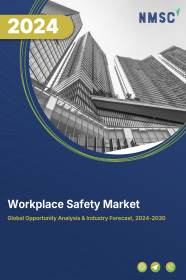
Singapore Elevator Market by Type (Passenger elevator, Freight elevator and Others), by Technology (Traction and Hydraulic), by Service (New Installation, Maintenance and Modernization), by Capacity (Less than 1500 kg, 1500 to 2500 kg, 2501 to 4000 kg and More than 4000 kg) by Speed (Less than 1 M/S, Between 1 to 4 M/S and More than 5 M/S), by Deck type (Single Deck and Double Deck) and Others- Opportunity Analysis and Industry Forecast, 2024 –2030
Industry: Construction & Manufacturing | Publish Date: 15-Feb-2025 | No of Pages: 129 | No. of Tables: 95 | No. of Figures: 60 | Format: PDF | Report Code : CM1661
US Tariff Impact on Singapore Elevator Market
Trump Tariffs Are Reshaping Global Business
Market Definition
Singapore Elevator Market size was valued at USD 365.93 million in 2023, and is predicted to reach USD 592.09 million by 2030, at a CAGR of 6.1 % from 2024 to 2030. The elevator market represents a dynamic sector encompassing the design, manufacturing, installation, and maintenance of elevator systems. From conventional traction elevators to cutting-edge smart solutions, this market offers a diverse array of vertical transportation choices customized to suit the distinct requirements of various buildings and infrastructure projects. Stakeholders within the elevator market include manufacturers, suppliers, contractors, architects, building owners, and facility managers.
Manufacturers continuously innovate to enhance elevator performance, safety, and sustainability, while suppliers provide critical components and materials necessary for system construction. Additionally, sustainability considerations, including energy efficiency and material recyclability, are increasingly integral to elevator design and operation. They align with broader environmental objectives and sustainable building practices. Thus, the elevator market is a cornerstone of vertical mobility as elevators enhance functionality, accessibility, and sustainability within buildings and urban landscapes worldwide.
Rising Infrastructure Development is Fuelling the Growth of the Market
Another significant driver for the growth of the elevator market in Singapore is the ongoing infrastructure development initiatives and industrial expansion. The Singaporean government's focus on infrastructure development, including transportation networks, commercial hubs, and residential complexes, has led to increased construction activities across the country. Additionally, the expansion of industries such as manufacturing, healthcare, and hospitality requires modern facilities equipped with vertical transportation solutions to enhance efficiency and accessibility. Consequently, there is a growing demand for elevators to facilitate vertical mobility within these newly developed infrastructures. This surge in construction projects and industrial expansion acts as a catalyst for the growth of the elevator market in Singapore, presenting opportunities for manufacturers and service providers to meet the evolving needs of the market.
Robust Urbanization is Propelling the Growth of the Market
Singapore's intricate urban landscape, characterized by its dense infrastructure, underscores the criticality of streamlined vertical mobility solutions, rendering elevators indispensable for navigating the city's vertical expanse. With Singapore steadfastly advancing its infrastructure to accommodate expansion and modernization initiatives, the demand for elevators across residential, commercial, and industrial domains is on a marked upward trajectory. This surge in demand is primarily attributed to the imperative need for efficient vertical transportation solutions, a necessity accentuated by ongoing urban development.
The burgeoning urban landscape of Singapore, marked by towering skyscrapers and densely populated neighbourhoods, underscores the indispensable role of elevators in facilitating seamless vertical movement. As Singapore's skyline continues to evolve with ambitious architectural projects and urban renewal efforts, the reliance on elevators as a fundamental component of vertical transportation is poised to intensify.
Within residential enclaves, elevators serve as essential conduits for residents, ensuring convenient access to their dwellings situated within high-rise apartment complexes and condominiums. Similarly, in commercial and industrial settings, elevators play a pivotal role in facilitating the movement of goods, equipment, and personnel across multiple floors, thereby enhancing operational efficiency and productivity.
The burgeoning demand for elevators in Singapore is further propelled by the relentless pace of urbanization and population growth, which necessitate innovative solutions to optimize space utilization and enhance urban mobility. As the city-state embarks on ambitious urban development projects and infrastructure upgrades, the need for advanced vertical transportation solutions becomes increasingly pronounced, driving the expansion of the elevator market.
Moreover, as Singapore embraces sustainable urban planning principles and strives to mitigate congestion and environmental impact, the adoption of cutting-edge elevator technologies, such as energy-efficient systems and smart mobility solutions, is poised to gain traction. These advancements not only contribute to enhanced operational efficiency and reduced energy consumption but also align with Singapore's vision of a sustainable and livable urban environment.
In essence, the burgeoning demand for elevators in Singapore mirrors the city-state's relentless pursuit of urban excellence and underscores the pivotal role of vertical transportation solutions in shaping its dynamic urban landscape. As Singapore continues to chart its course towards sustainable development and economic growth, elevators emerge as indispensable conduits of progress, facilitating seamless vertical mobility and redefining the contours of urban living in the Lion City.
The Significant Initial Cost Hinders the Growth of the Market
The significant costs linked to installing, maintaining, and improving elevators create obstacles to expanding the market. From the initial installation expenses to the ongoing maintenance fees and the necessity for upgrades to comply with safety standards and improve energy efficiency, building owners face substantial financial hurdles. These challenges are especially daunting for owners located in economically disadvantaged areas or within older buildings. Consequently, the increased expenses associated with elevators hinder market expansion across different regions.
The Integration of Artificial Intelligence (AI) in Elevators is Expected to Create Future Opportunities for the Market
The integration of AI-driven predictive maintenance into the elevator industry presents a compelling opportunity, revolutionizing maintenance and operational practices through advancements in AI. Through the analysis of data collected from elevator sensors, AI algorithms can anticipate maintenance requirements in advance, reducing downtime and maximizing elevator uptime. This proactive approach not only prolongs the lifespan of elevator components but also improves safety by forecasting unforeseen breakdowns and optimizing resource allocation, leading to significant cost savings for elevator companies. Furthermore, well-maintained elevators enhance user satisfaction, thereby elevating the overall experience for building occupants and visitors. Embracing AI-driven predictive maintenance enables elevator firms to stay competitive and uphold service excellence in an ever-changing market environment.
Competitive Landscape
The Singapore elevator market comprises various market players, such as Schindler, Otis Elevator Company, TK Elevator (TKE), KONE Corporation, Fujitec Co. Ltd, Hyundai elevator Co. Ltd, Mitsubishi Electric Corporation, Toshiba Corporation, Hitachi Ltd., IFE Elevators and others.
Singapore Elevator Market Key Segments
By Type
-
Passenger elevator
-
Freight elevator
-
Others
By Technology
-
Traction
-
Machine Room [MR] Traction
-
Machine Roomless [MRL] Traction
-
-
Hydraulic
By Service
-
New Installation
-
Maintenance
-
Modernization
By Capacity
-
Less than 1500 kg
-
1500 to 2500 kg
-
2501 to 4000 kg
-
More than 4000 kg
By Speed
-
Less than 1 M/S
-
Between 1 to 4 M/S
-
More than 5 M/S
By Deck Type
-
Single Deck
-
Double Deck
By Designation Control
-
Smart
-
Conventional
By Door Type
-
Automatic
-
Manual
By Application
-
Residential
-
Commercial
-
Industrial
REPORT SCOPE AND SEGMENTATION:
|
Parameters |
Details |
|
Market Size in 2023 |
USD 365.93 Million |
|
Revenue Forecast in 2030 |
USD 592.09 Million |
|
Growth Rate |
CAGR of 6.1% from 2024 to 2030 |
|
Analysis Period |
2023–2030 |
|
Base Year Considered |
2023 |
|
Forecast Period |
2024–2030 |
|
Market Size Estimation |
Million (USD) |
|
Growth Factors |
|
|
Companies Profiled |
10 |
|
Market Share |
Available for 10 companies |
|
Customization Scope |
Free customization (equivalent up to 80 working hours of analysts) after purchase. Addition or alteration to country, regional, and segment scope. |
|
Pricing and Purchase Options |
Avail customized purchase options to meet your exact research needs. |
KEY PLAYERS
-
Schindler
-
Otis Elevator Company
-
TK Elevator (TKE)
-
KONE Corporation
-
Fujitec Co. Ltd
-
Hyundai elevator Co. Ltd
-
Mitsubishi Electric Corporation
-
Toshiba Corporation
-
Hitachi Ltd.
-
IFE Elevators

















 Speak to Our Analyst
Speak to Our Analyst




















